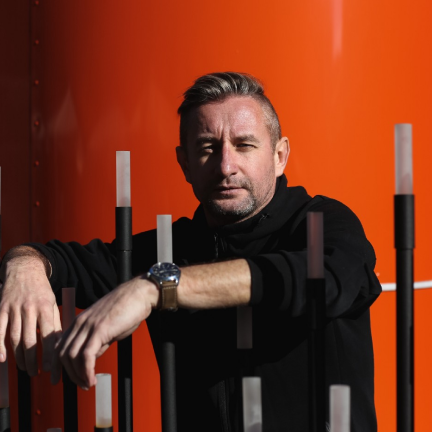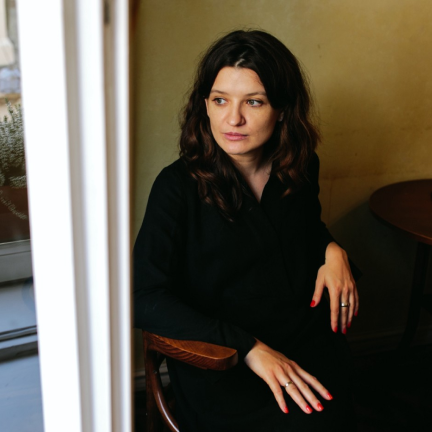Russian Soldier Faces Trial for Murder of Ukrainian POW: report from the hearing
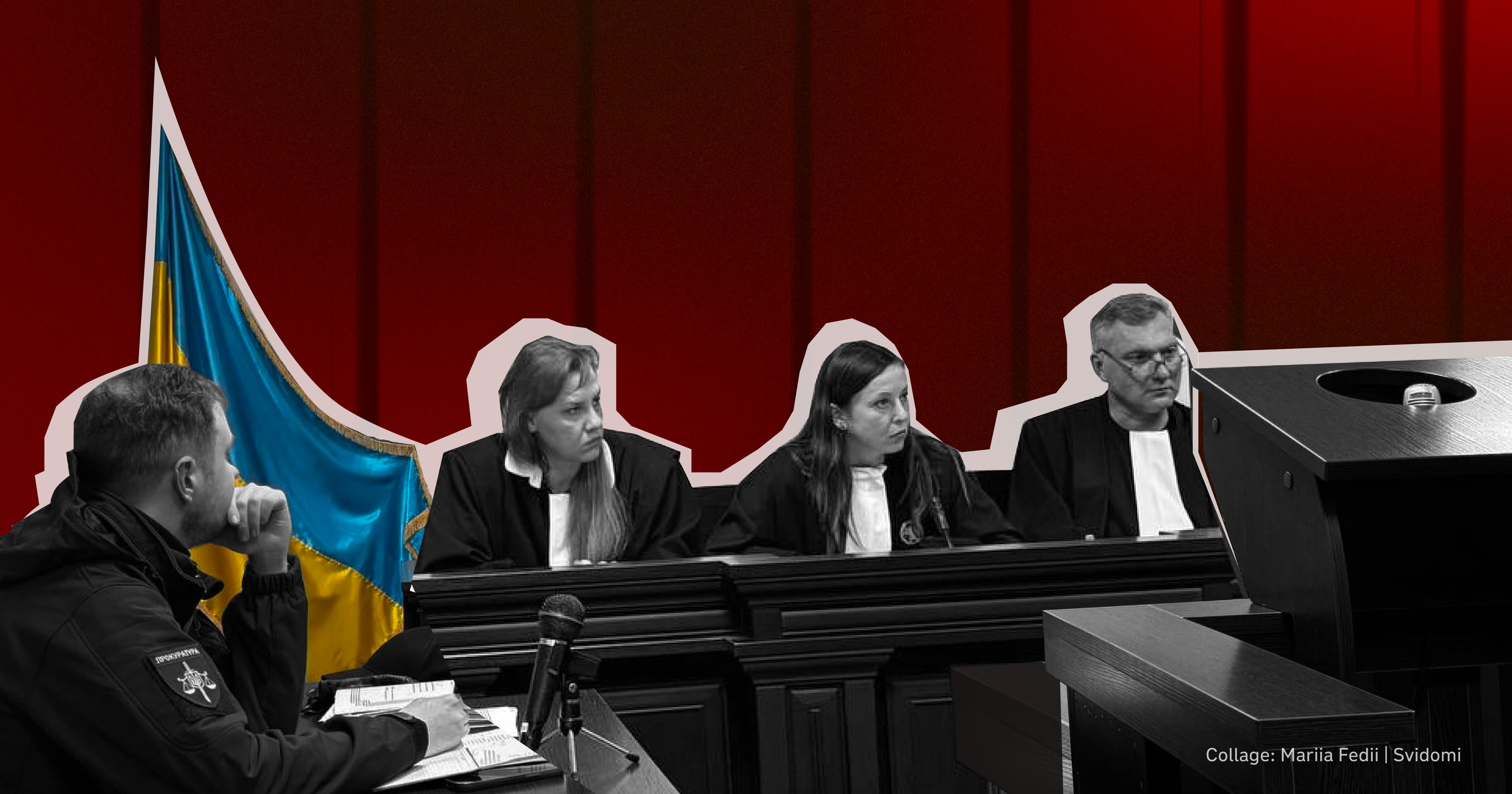
The trial of Russian military officer Dmitry Kurashov continues in Zaporizhzhia. He is charged with executing Ukrainian prisoner of war (POW) Vitalii Hodniuk. Kurashov was taken prisoner in early 2024. The case marks the first time a Russian serviceman accused of executing a Ukrainian POW has been physically present in court. Previously, trials addressing similar cases have been held in absentia.
During pre-trial proceedings, Kurashov denied having killed Hodniuk. At the hearing, he pleaded guilty, only to later plead innocent again. Svidomi reports on the course of the hearing.
Inside the Case: Key Details
Dmitry Kurashov, 26, goes by the call sign "Stalker." He was captured in late January 2024 near Zaporizhzhia. During the battle, he lost his left eye.
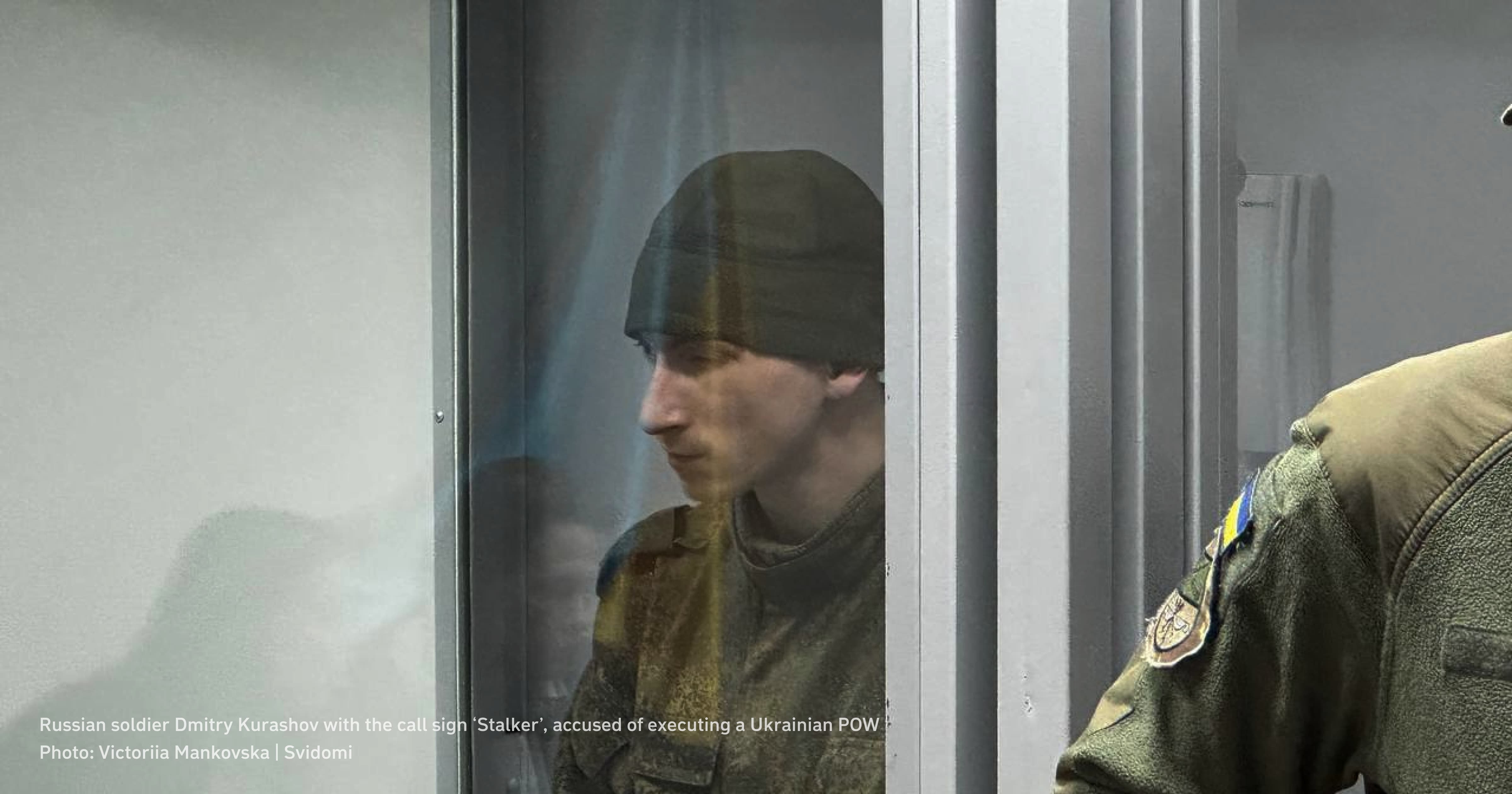
In a video posted on the Telegram channel Don't Wait for Me from Ukraine—the largest anonymous database tracking Russian soldiers captured or killed in the war—Kurashov stated that he joined the military in 2023 to secure his release from prison, where he was serving a sentence for theft. He claimed he wanted to start a new life, as his criminal record made it difficult to find employment. He also alleged that he was unaware he would be assigned to an assault unit, saying he had planned to work on repairing military equipment.
Kurashov told the court he was born in Gremyachinsk, Perm Krai, Russia. He attended school until the ninth grade but did not receive a certificate. He has prior convictions for theft and assaulting a police officer.
According to the prosecution, on the morning of January 6, 2024, a group of Russian servicemen from the Storm-V detachment, including Kurashov, attacked Ukrainian positions near the village of Pryiutne, Polohy district, Zaporizhzhia region. These positions had been held by soldiers of the 127th Independent Brigade of the Territorial Defense Forces before being overrun by the Russians.
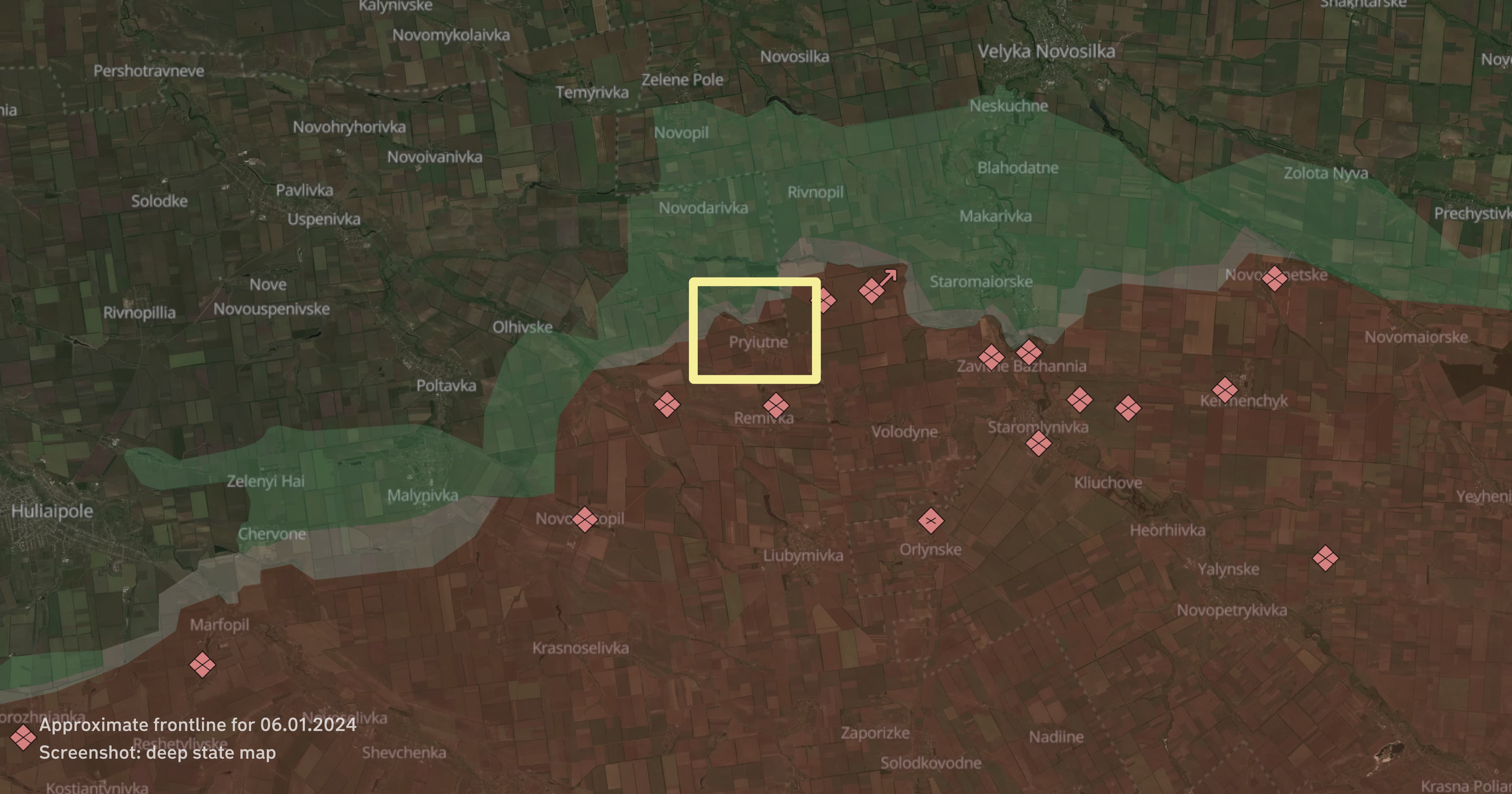
"Realizing the impossibility of further resistance against the enemy’s superior numbers," 41-year-old Ukrainian serviceman Vitalii Hodniuk laid down his weapon, raised his hands, exited the dugout, and knelt at Kurashov's request. However, Kurashov responded by firing at least three targeted shots, killing Hodniuk on the spot, according to the case files.
Shortly after, the Ukrainian Armed Forces regained their lost positions and captured several Russian stormtroopers, including Dmitry Kurashov, Oleg Zamiatin, Konstantin Zelenin, and Dmitry Zuev—who all witnessed the execution. Kurashov has been charged with violating the laws and customs of war, combined with intentional murder (Article 438(2) of the Criminal Code of Ukraine). If convicted, he faces 10 to 15 years in prison or a life sentence.
Report from the Courtroom
Zaporizhzhia regional prosecutor Mykyta Manevskyi, a defence attorney (who requested not to be identified in the report, as she did not want to be associated with the defendant – ed.), and an interpreter were present at the hearing. Kurashov was escorted into the courtroom. The victims were not present, having notified the court in advance.
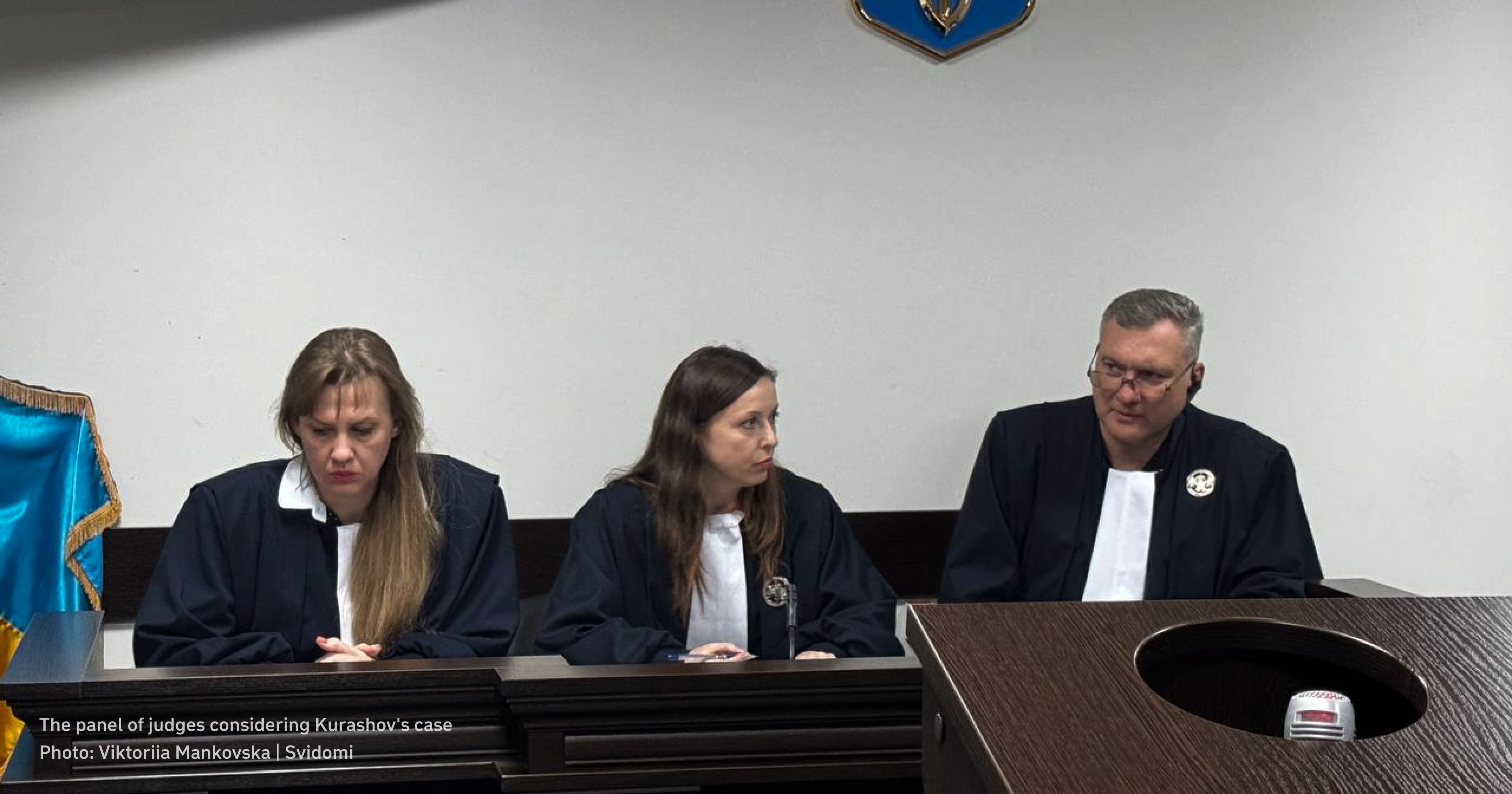
The Russian POWs were also brought in for questioning but testified in a separate room. As explained by the presiding judge, it was not possible for the witnesses and the accused to be in the same room.
The judges, prosecutor, and attorney questioned the witnesses through an interpreter in the main courtroom, while the Russian servicemen's responses were displayed on screens.
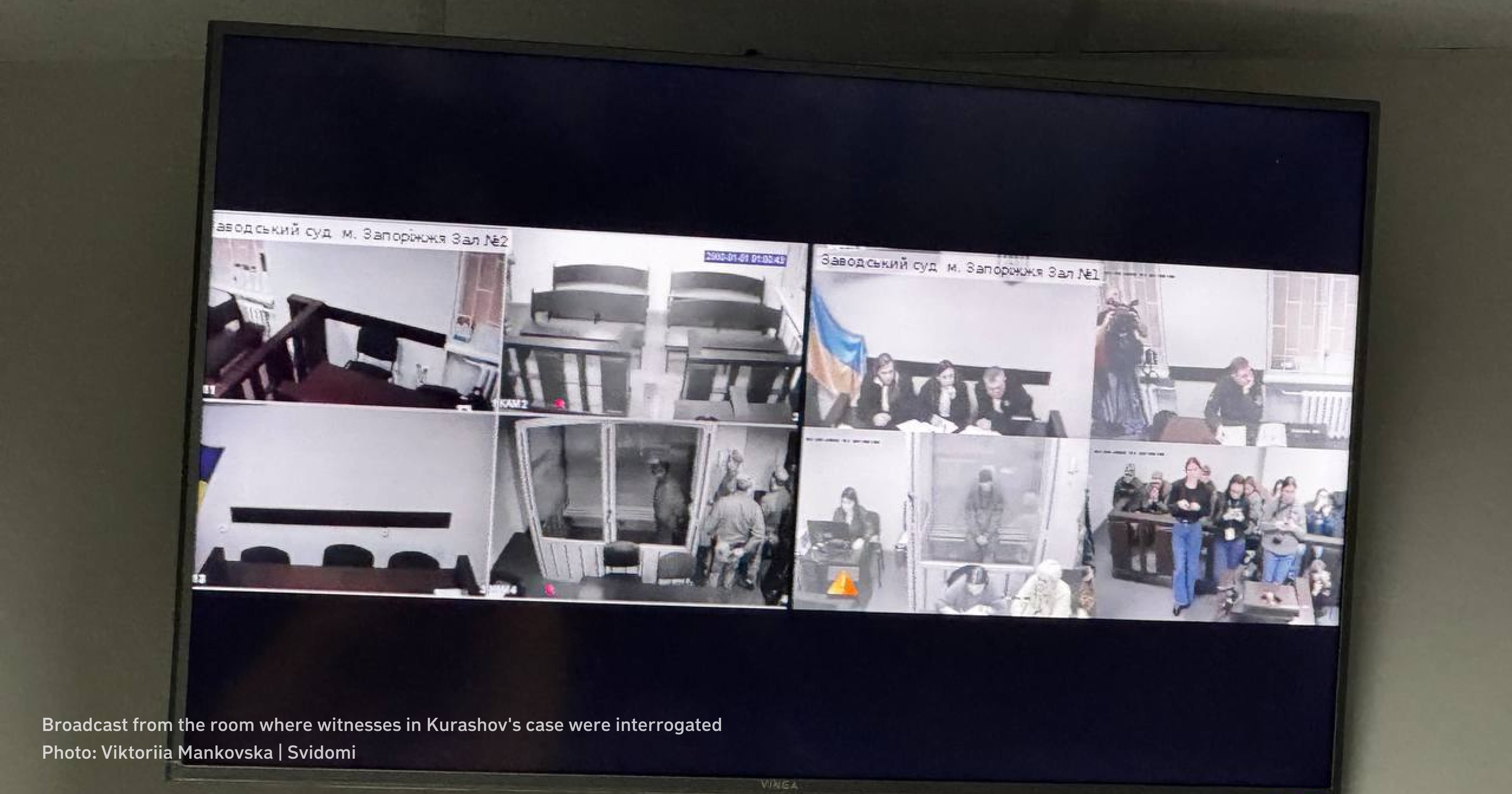
The first witness, Oleg Zamiatin, testified that he had seen Ukrainian soldier Vitalii Hodniuk before his death.
“After the debarkation, I saw a Ukrainian (soldier – ed.) come out. Then I heard a submachine gun burst. The body fell. There was an explosion behind me, and I blacked out.”
Zamiatin stated that only he and "Stalker" were near the Ukrainian soldiers' dugout. When Judge Olha Pohribna asked him to clarify Hodniuk's position, he replied that he could not remember, as too much time had passed.
“Did the Ukrainian serviceman have any weapons in his hands?” prosecutor Manevskyi asked.
“No. The only thing I remember is that he had a Ukrainian flag on his sleeve,” Zamiatin replied.
"Did you see Kurashov fire shots at the Ukrainian soldier?" the judge clarified.
“I can't say for sure it was him. But there was no one else there,” the witness responded.
Zamiatin stated that Kurashov was standing to his right. It was from that direction that he had heard the shots.
Russian soldier Konstantin Zelenin was the next to testify. He explained that three groups carried out the assault on January 6. Zelenin was the commander of the third group, which consisted of six soldiers, including Kurashov. This group attacked the centre of the Ukrainian positions, while the other two groups advanced from the right and left.
When Kurashov's group crossed the barbed wire, they came under fire. Zelenin hid in a bomb crater and saw a Ukrainian soldier emerge from the first dugout with his hands up. A few seconds later, the witness heard submachine gun fire, and the prisoner collapsed.
"When the body fell, I saw ‘Stalker’ to my right. He was the only one in sight. There was no one else in the vicinity," Zelenin said.
When Zelenin rushed to the first dugout, he saw that the Ukrainian POW was lying unarmed.
"Do you think anyone other than 'Stalker' could have done this?" the prosecutor asked.
"No, no one but him," Zelenin replied.
"Do you know a serviceman with the call sign 'Sedoy'?" the prosecutor inquired.
“Yes, but I didn't see him on the battlefield, because he came from the other flank,” Zelenin responded.
The prosecutor later stated that at a November 1 hearing, Kurashov alleged that combat medic Sergei Kuchimov, with the call sign "Stalker", had shot Hodniuk. According to Kurashov, the Ukrainian serviceman had already been wounded by a blast, and Kuchimov was unable to provide medical assistance.
Konstantin Zelenin testified that Kuchimov had been part of another assault group, placing him farther from the location where the Ukrainian fighter was executed. Dmitry Zuev, the third witness, also stated that he did not see Kuchimov nearby during the execution.
"I was told that he was dead. But I don't know how," Zuev added.
Zuev claimed that he saw Kurashov order a Ukrainian serviceman to leave the dugout before shooting him as he surrendered.
“Kurashov said, ‘Come out! Surrender!’ The Ukrainian soldier emerged from the dugout with his hands up and knelt down. Just moments earlier, ‘Stalker’ had thrown grenades into the dugout.”
“What position was the Ukrainian serviceman in?” the judge asked.
“He dropped his rifle, came out with his hands raised, knelt, and then fell. He was wearing a blue-and-yellow Ukrainian badge.”
During the interrogation, Zuev stated that Kurashov had taken a watch from the body of the deceased Vitalii Hodniuk.
None of the witnesses said they had discussed the execution with Kurashov. However, Zelenin testified that in the pre-trial detention centre, the accused had bragged about executing a Ukrainian POW in front of other prisoners.
The witnesses testified that Kurashov did not use his own weapon. Before the assault, he was given an assault rifle by a serviceman with the call sign "Sufii." According to the Russian POWs, "Sufii" was hospitalised with a broken leg. His call sign was scratched into the handle of his rifle.
During the hearing, Kurashov did not question the witnesses or offer any comments. However, after the session, a journalist asked him:
"Do you agree with the testimony given by the witnesses today?"
"No, I do not agree. I will not make any further comments," Kurashov responded.
His attorney, who had hastily packed her things and left the courtroom immediately after the hearing, returned upon hearing that journalists were questioning her client.
"Why are you asking the accused provocative questions? Who knows what you’ll write about it later?" she told the journalists.
After the defence attorney left for the second time, the guards asked the journalists to exit so they could escort Kurashov out of the courtroom.
The next hearing in Kurashov's case is scheduled for March 5.
Prosecutor’s Position in the Case of the Execution of a Ukrainian POW
Prosecutor Mykyta Manevskyi emphasized that the execution of Vitalii Hodniuk is just one of many instances in which Russian soldiers have summarily executed Ukrainian POWs. However, this is the first case in which the accused is physically present in court.
He stressed that all warring parties are obligated to follow the laws of war, including the humane treatment of prisoners.
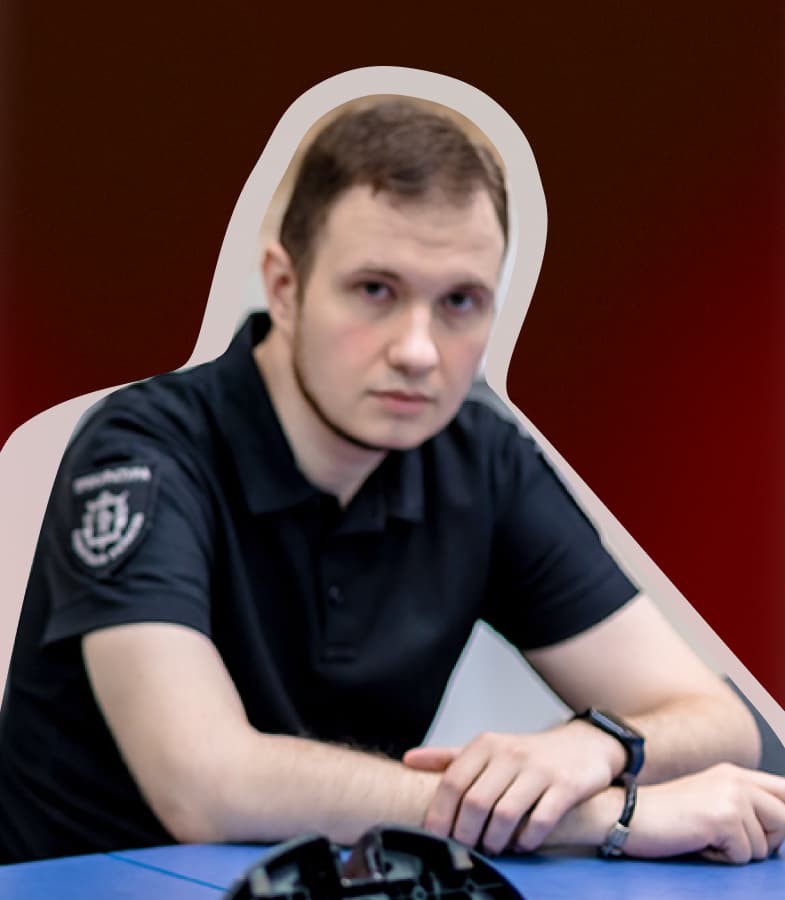
"This is a beautiful dream. However, in practice, it is almost impossible to achieve,"
Manevskyi added.
The prosecutor acknowledged that Ukraine is forced to respond to these crimes on its own, as Russia refuses to address them.
"Investigating such cases presents significant challenges," he continued. "It is rare for a serviceman involved in an execution to be captured immediately. This makes Dmitry Kurashov’s case unique. Reconstructing events during battle is also difficult, as access to the crime scene is usually impossible, and witness accounts may differ."
Despite these challenges, the prosecutor stressed the importance of seeking justice in such cases.
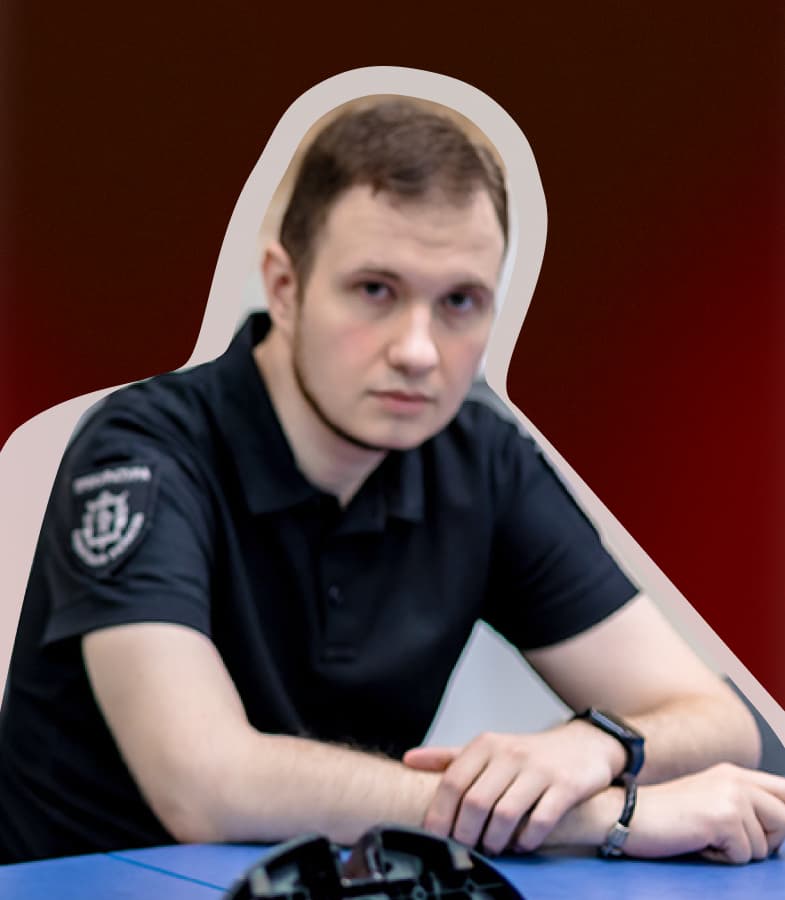
"Since the other side largely ignores such crimes, we are the ones who must respond,"
he concluded.

